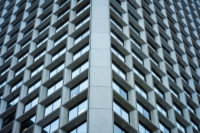January Construction Starts Climb 9% Nationwide
On the plus side, amusement and recreational work increased 29%, with the boost coming from the $350-million expansion of the Moscone Convention Center in San Francisco and a $115-million casino in Glendale, Ariz. Church construction improved 57% from a very low December amount, due to the start of a $60-million church in New Canaan,
Residential Building
Residential building dropped 9% in January to $230 billion (annual rate). The decline reflected a 30% pullback for multifamily housing from December’s elevated activity, continuing an up-and-down pattern around what is still viewed to be a strengthening trend for this structure type.
January witnessed groundbreakings for several large multifamily projects, including a $500-million expansion to an apartment building in New York City; the $141-million multifamily portion of a $174-million, mixed-use project in Washington, D.C.; and the $99-million multifamily portion of a $165-million, mixed-use project in Austin, Texas.
The leading metropolitan areas in terms of the dollar amount of new multifamily projects in January were New York City, Miami, Boston, Washington, D.C. and Denver.
Single-family housing in January was unchanged from December, as the result of this pattern by major region—the Midwest, up 8%; the Northeast, up 5%; the South Atlantic, up 2%; and the South Central and West, each down 5%.
Over the course of 2014, single-family housing was essentially flat, and that pattern has continued into early 2015. “On a positive note, the most recent survey of bank-lending standards conducted by the Federal Reserve indicated that the fourth quarter of 2014 saw a slight easing of standards for residential mortgage loans, which may help single-family home sales and construction regain some upward momentum in the coming months,” Murray said.
The 18% gain for total construction starts on an unadjusted basis for January 2015 relative to January 2014 was the result of this performance by sector—nonresidential building, down 10%; residential building, down 3%; and nonbuilding construction, up 85%.
By geography, total construction starts for January 2015 relative to January 2014 showed an increase for one region—the South Central, up 83%. The other four major regions witnessed decreased activity compared to the same month a year ago—the South Atlantic, down 1%; the West, down 3%; the Northeast, down 7%; and the Midwest, down 11%.
Useful perspective is made possible by looking at 12-month moving totals, in this case the 12 months ending January 2015 versus the 12 months ending January 2014, which lessens the volatility present in one-month comparisons.
For the 12 months ending January 2015, total construction starts were up 9%, due to this pattern by sector—nonresidential building, up 18%; residential building, up 8%; and nonbuilding construction, up 1%.
By geography, the 12 months ending January 2015 showed the following behavior for total construction starts—the South Central, up 21%; the South Atlantic, up 11%; the West, up 8%; and the Northeast and Midwest, each up 1%.

